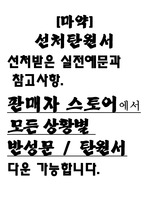[economy] korea economy
*자*
다운로드
장바구니
목차
I. OverviewII. Changes in the Korean economy five years after the IMF bailout
1. Improvement in macroeconomic indices
2. Inappropriate and inconsistent policies of the IMF
3. Insufficient progress of four major reforms
4. Difficulty in adjustment to new systems
II. Changes in major sectors of the economy
1.Surge in official foreign currency liquidity
2. Upgrade of the nation's sovereign credit rating
3. Insufficient progress of four major reforms
4. Difficulty in adjustment to new systems
III. Some concerns surrounding the current state of the economy
1. Growing worries over bubble forming in the economy
2. The economic recovery will most likely lead to overheating exports pick up
IV. Suggestions
본문내용
I. OverviewFive years have passed since the IMF bailed out Korea on December 3, 1997. During this period, the nation experienced its worst economic slump since 1980 with nose-diving stock prices, a soaring foreign exchange rate, and the force-out of troubled companies and ailing financial institutions. But the nation struggled to overcome the crisis, as dramatically exemplified by the participation of many people in a nationwide campaign to collect gold for export (to secure foreign currency liquidity). As a result, the nation's foreign currency reserve started to fill up quickly and the economy started to recover from the end of 1998. And with the complete repayment of its IMF bailout loan of USD 19.5 billion on August 23 2001, Korea officially graduated from the IMF workout program.
Entering 2002, despite the nation's still stagnating export, the Korean economy has rapidly been recovering, owing to strong domestic demand. Indeed, industrial production recorded an increase rate of 10.3% yoy and the service industry posted growth of 9.7% yoy in January, although export declined by 13.2% yoy in the first two months of this year. At the same time, the average capacity utilization rate is rising and inventory is falling, showing typical signs of the economy's climb on its upward track.



















![[economy] korea economy](/doc/cover/1120007/economy__korea_economy.jpg)








